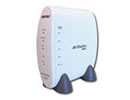'ZDNET Recommends': What exactly does it mean?
ZDNET's recommendations are based on many hours of testing, research, and comparison shopping. We gather data from the best available sources, including vendor and retailer listings as well as other relevant and independent reviews sites. And we pore over customer reviews to find out what matters to real people who already own and use the products and services we’re assessing.
When you click through from our site to a retailer and buy a product or service, we may earn affiliate commissions. This helps support our work, but does not affect what we cover or how, and it does not affect the price you pay. Neither ZDNET nor the author are compensated for these independent reviews. Indeed, we follow strict guidelines that ensure our editorial content is never influenced by advertisers.
ZDNET's editorial team writes on behalf of you, our reader. Our goal is to deliver the most accurate information and the most knowledgeable advice possible in order to help you make smarter buying decisions on tech gear and a wide array of products and services. Our editors thoroughly review and fact-check every article to ensure that our content meets the highest standards. If we have made an error or published misleading information, we will correct or clarify the article. If you see inaccuracies in our content, please report the mistake via this form.
Buffalo AirStation WBR-G54


Buffalo AirStation WBR-G54
pros and cons
- Faster wireless networking range of built-in services good wired networking connections.
- Based on draft 802.11g standard Needs external Ethernet gateway to work with DSL lines.
If you want wireless networking, but think 11Mbps isn't enough for you, read on. Buffalo Technology is one of the first manufacturers to produce faster wireless networking equipment based on the new 802.11g standard. Although this won't make your Internet browsing faster, as this depends on the speed of your connection, it does make the streaming of video or multiple audio tracks possible without needing wires.
The AirStation WBR-G54 uses a draft of the 802.11g standard, running at 54Mbps. Unlike the other 54Mbps wireless standard, 802.11a, the 'g' variant uses the 2.4GHz band, which is unlicensed. Although at the time of writing the government is considering liberalising the 5GHz band used by the 'a' variant, the use of the 2.4GHz band has other advantages: the same radio frequency (RF) components are used as in 802.11b equipment, and all 802.11g equipment should be backwards compatible with the 11Mbps standard, without being much more expensive. However, since this is a draft standard, it's possible that it could be changed before the IEEE, the body in charge of this family of standards, ratifies it -- this is expected to happen in May 2003. This could mean that, at worst, the draft standard-based units won't work with other equipment; or it could simply need a firmware update to comply with the ratified standard. The other effect of 802.11g using the same frequency band as 802.11b is that, although they are compatible, they can't operate at the same time: if one client uses 802.11b, they all have to -- irrespective of whether or not they're 802.11g-compatible.Features
The WBR-G54 is a combined router, switch and access point. The WAN interface is an Ethernet port, so you can use the WBR-54G with a cable modem connection. It doesn't have a DSL interface, so you'd need an external Ethernet DSL gateway -- of which there are few available. There's also no facility to use a dial-up connection as a backup.
The WBR-G54 is relatively small at 7.6cm by 15.5cm by 17.1cm, and stands upright. All the connections are on the rear of the unit. Although internal antennas are used, there's also a socket for an external antenna. There are five LED indicators on the front panel, showing power, wireless, WAN activity and a diagnostic LED. On the right-hand side are activity LEDs for each of the LAN ports.
You get four switched Ethernet ports, which not only detect the speed of what's plugged into them, but also have an auto-crossover, so that you don't need a special cable to plug another switch or hub into the WBR-G54. There's a DHCP server built into the router which is enabled by default, so connecting wired PCs to the network is simply a case of plugging the cables in.
In addition to the DHCP server, a network address translator (NAT), firewall and intrusion detection system is built into the WBR-G54. This means you can connect many PCs to your broadband connection and have a reasonable level of protection from hacking attempts. This won't prevent such problems as email-borne viruses, but it will stop casual snoopers and port scanners getting an easy way into your network.
You administer the WBR-G54 using a Web interface. If you're using a wireless client to do this, there's a utility that lets you set the unit's IP address, or simply discover it if you're using the DHCP server. Otherwise, you'll have to configure your PC with an IP address on the same subnet at the unit's default address. Once into the interface, you're presented with three options: DSL, CATV (Cable modem) and Advanced. The first two of these take you through a setup wizard, although there's little difference as far as UK users are concerned.
If you use the Advanced option, you get access to all the WBR-G54's features. The interface itself contains many options and could be daunting for someone with little networking experience, so it's probably best to stick to the wizards in this case. However, if you want to use complex Internet applications (games are a prime example), you may need to go in here to change the firewall settings to allow this.
Performance
Our tests showed that, like all wireless LAN equipment we've examined, the throughput of this 802.11g system is less than the stated data rate (54Mbps in this case). We measured the throughput of the wireless system at various distances between the unit and the client PC. We found that the throughput of the access point was quite variable at small distances, although performance was more consistent -- but slower -- at larger separations. The maximum data rate we achieved was just over 20Mbps, which is in the region we'd expect for a relatively low-cost access point, although it's lower than we expect to see once the standard is ratified. As the distance between the client and access point increases, the data rate drops to around 12Mbps at 50m. This is still more than double what you'd get from 802.11b equipment (around 5Mbps), and it's also far faster than any broadband Internet connection.
Buffalo's AirStation WBR-G54 has a good set of features and makes connecting many PCs to a cable modem connection quite easy, although the lack of built-in DSL connection is a shame. Higher-speed wireless networking is interesting and does provide an advantage over standard Wi-Fi equipment, but there's more to this product than its wireless speed.